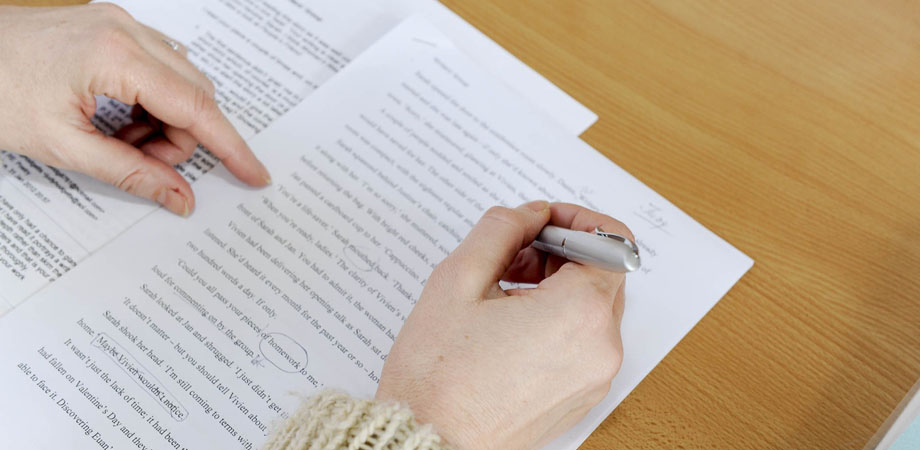
When was the last time you took a dedicated writing class? If you're like most scientists or engineers, the last one you took was in high school or college. I'll ask another question: When was the last time you didn't need to communicate your latest research findings in written form? Whether it takes the form of a memo, white paper, proposal, or journal paper, written communication is a critical piece of life as a scientist or engineer. In particular, an ability to write scientific articles that are clear, informative, provocative, and interesting, can have positive and long-lasting implications on your career.
Crafting successful technical articles requires focusing on two key elements, the first of which is strong content. Most of you have this element covered since, as a rule, scientists and engineers do important and impressive work. Often neglected, however, is the second key element: effective writing. I argue that the writing itself—the language, the structure, and, yes, the grammar—plays an equally large role in the success of a written piece. Yet, the emphasis on effective writing practices generally takes a back seat to the emphasis placed on content.
A recent study investigated the readability of 707,452 scientific abstracts published between 1881 and 2015. The researchers found that readability, which quantifies the clarity of written language, has been on a steady decline in the scientific community. However, we don't have to continue this downward trend. Just as we attend professional-development seminars and conferences to broaden and sharpen our technical skills, we must also dedicate time to improving our grasp of the English language.
1. Keep it interesting. I'm not talking about content—I'm talking about your written voice. A common mistake among inexperienced writers is to write using the same sentence structure over and over, which can put your reader into a trance. For example: "The objectives of the current optimization study were ..." "Results indicate that ...." "The current method showcases ..."
The simple "subject-verb" sentence opener like in the sentences above is, by no means, evidence of low-quality writing. Repeating five "subject-verb" openers in a row, however, underscores a lack of experience. Consider changing it up. Varying your sentence structure establishes an attention-grabbing rhythm that your reader can latch on to, thus leaving you with a more captivated audience for longer periods of time.
2. Pay close attention to how your text looks on the page. Long paragraphs appear intimidating to readers. Oftentimes, you'll hear limits placed on the number of sentences allowed in a paragraph, but sentence number is not the most important metric. Instead, take a step back from your paper and squint: how much white space do you see?
Whether the format of your published article will be single, double, or triple columned, having single paragraphs that take up a significant amount of one column is intimidating. Consider formatting your text once you've reached the late stages of drafting, even if your intended journal does not require you to submit a formatted draft. You'll see which paragraphs appear too long—a good rule of thumb is to break up any paragraph that takes up over 40% of a column's length.
3. Study expert writers. Without a solid foundation in writing to rely on, the technical community is left to scour peer articles for guidance. Undoubtedly, much can be learned from reading peer articles; understanding peers' previous work, learning new methods, and keeping up-to-date on new advancements are reasons to execute an in-depth literature review.
However, when it comes to becoming a better writer, I point you to the experts—those who have studied literature and, clearly, excel in the field. The best way to learn new sentence structures, grammatical constructs, and expanded vocabulary is by reading the work of professional novelists, short story writers, and newspaper and magazine authors. The type of creative writing is irrelevant: what matters is that you expose yourself to writing techniques that differ from your peer technical articles.
In conclusion, think about the writing—the language, the structure, the grammar—of your next technical article in the same way you regard your technical content. Becoming a stronger writer isn't going to happen overnight. Utilizing the above tips, however, is a step in the right direction. In addition, numerous tools exist to help you improve. For one, The Craft of Scientific Writing, by Michael Alley, serves as an excellent resource for experienced and inexperienced writers alike. My workshop, "The Craft of Scientific Writing," at SPIE Photonics West 2020 is derived from Professor Alley's work and is open to scientists, engineers, speakers, and all other conference attendees.
Katie Kirsch is a mechanical engineer with ten years' experience teaching effective scientific communication strategies. She's taught courses around the world to clients in government, academia, and industry. Outside of her communication courses, Katie works as a research and development engineer with expertise in additive manufacturing, heat transfer, and design.